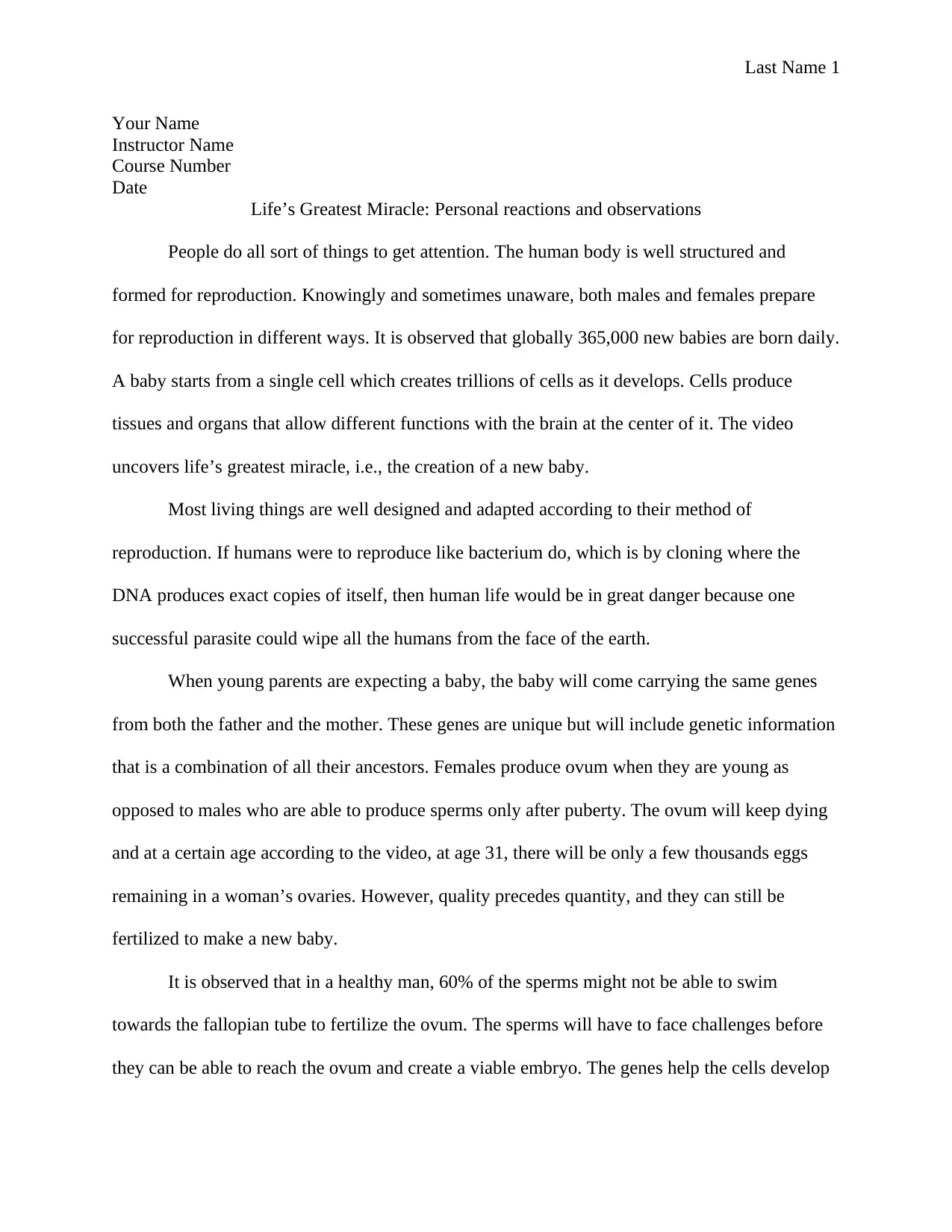Life's Greatest Miracle: Personal Reactions and Observations Essay
VerifiedAdded on 2023/06/10
|3
|585
|448
Essay
AI Summary
This essay delves into personal reactions and observations regarding life's greatest miracle, the creation of a new baby. It highlights the complexities of human reproduction, contrasting it with other methods like bacterial cloning. The essay discusses the role of genes in determining traits and the intricate process of cell development and organ formation. It also touches upon the challenges faced by sperm in fertilization and the significance of chemical messages in guiding embryonic development. The author reflects on the unique human experience of childbirth and the privilege of witnessing this miracle. The essay references NOVA PBS's documentary on the subject, providing a scientific perspective on the biological processes involved in creating new life.
1 out of 3










![[object Object]](/_next/static/media/star-bottom.7253800d.svg)